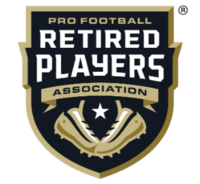
Moore: NFL concussions up? The fix is easy — get rid of the helmets
Jan 25, 2020

by Greg Moore, The Arizona Republic
Arizona Republic sports columnist argues with a couple of experts in Javier Cardenas and Mike Haynes.
If we really care about player safety, then we need to use our common sense and get rid of hard-shell football helmets. It comes to mind in the aftermath of an NFL report that showed concussions were up slightly last season.
The idea of getting rid of helmets isn’t new. Two-time Super Bowl-winning wide Hines Ward raised it on the Dan Patrick Show in 2012.
“If you want to prevent concussions, take the helmet off,” Ward said. “Play old-school football with the leather helmets, no face mask. When you put a helmet on, you’re going to use it as a weapon, just like you use shoulder pads as a weapon.”
Two prominent NFL wide receivers, Larry Fitzgerald (left) and Michael Crabtree. Would not wearing a helmet lead to fewer concussions in football, or open the door to more injuries? (Photo: Mark J. Rebilas/USA TODAY Sports)
There’s a budding movement supporting this line of thinking. There’s a no-pad, no-helmet, full- contact, semi-pro league, A7FL, heading into its sixth season. A Texas seven-on-seven league recently adopted rules for which types of soft-shell helmets will be required for play. And flag football leagues around the nation are using soft helmets from the youth to adult levels.
But that doesn’t mean everyone can imagine it working in the NFL.
“The short answer is no, I cannot,” Dr. Javier Cardenas said.
'We would see worse outcomes'
Cardenas is the director of the Concussion and Brain Injury Center at the Phoenix-based Barrow Neurological Institute. He’s an expert on concussions and traumatic brain injury and a member of the NFL’s Head, Neck and Spine Committee.
For him, it would be like removing safety controls from the vehicles we drive.
“Can you imagine a world where we took crumple zones out of cars? Or where we took air bags out? Seatbelts out? ABS and stability control out? I think we would see increased injuries. I think we would see worse outcomes.”
Cardenas is an advocate of a multifaceted approach to making the game safer. And the NFL has been using many of the measures he supports, including rule changes that ban head-to-head hits and improving helmet technology to reduce concussion risk.
The NFL data boosts Cardenas’s case. There were 224 concussions last year. There had been 214 in 2018. And both of those numbers were a huge drop from 281 in 2017. League doctors attribute the reduction to changes in kickoff and targeting rules.
Still, no helmets can prevent concussions entirely. With this knowledge, the Concussion Legacy Foundation has focused on eliminating youth tackle football through its Flag Football Under 14 campaign.
To raise awareness, the group picked an all-time team of players who didn’t start hitting in pads until high school.
It’s a who’s who of NFL greats, including Jerry Rice, Jim Brown, Walter Payton, Anthony Munoz, Lawrence Taylor and Mike Haynes.
'Make sure every single kid knows'
“I started playing in 10th grade,” Haynes said. “I was a baseball player before that.”
The two-time All-American from Arizona State now works with the Pro Football Retired Players Association, an independent group formed to help players plan for life after the gridiron.
It has a division focused on health, wellness and medical research.
He’s familiar with the no-helmet argument.
The original helmets from pro football's earliest days were leather and offered minimal protection. Hard-shell helmets and face masks came along in the 1940s. (Photo: ASSOCIATED PRESS)
“I’ve heard similar talk about having a soft-shell helmet, but the idea that I’ve been throwing out there is that maybe kids have full uniforms on and they learn, but they don’t get to play any games until they get to be a certain age.
“Learn to pull if you’re a lineman, catch if you’re a receiver, throw if you’re a quarterback, find the right hole if you’re a running back . I don’t know what that age would be, but definitely when they’re 7, 8, 9, 10 years old, you can teach them the game, help them understand the rules and even make sure they know how to tackle. But make sure every single kid knows what a concussion is and knows what to do if he’s feeling any of these symptoms.”
Cardenas supports this approach.
“What you’re really thinking about is multiple angles to address this problem,” he said. “One of them is equipment. The other is exposure. So, if you look at Arizona’s rule for high school athlete participation, we were one of the first states to limit the amount of contact practice in football . Now, if we take that down to youth and limit that exposure to contact even more, then that is a valid argument.”
The takeaway then, is that stakeholders are clearly invested in making football safer for players at all levels.
Their solutions don’t go as far as the common-sense logic that says players won’t bang their heads as often if they aren’t wearing helmets, but the NFL report shows they’re making clear progress.
Reach Moore at [email protected] or 602-444-2236. Follow him on Instagram and Twitter @WritingMoore.
Subscribe to The Arizona Republic to read the original article .
0 Comments
Request to Publish
Are you sure? This can't be undone
Mark as Harmful




